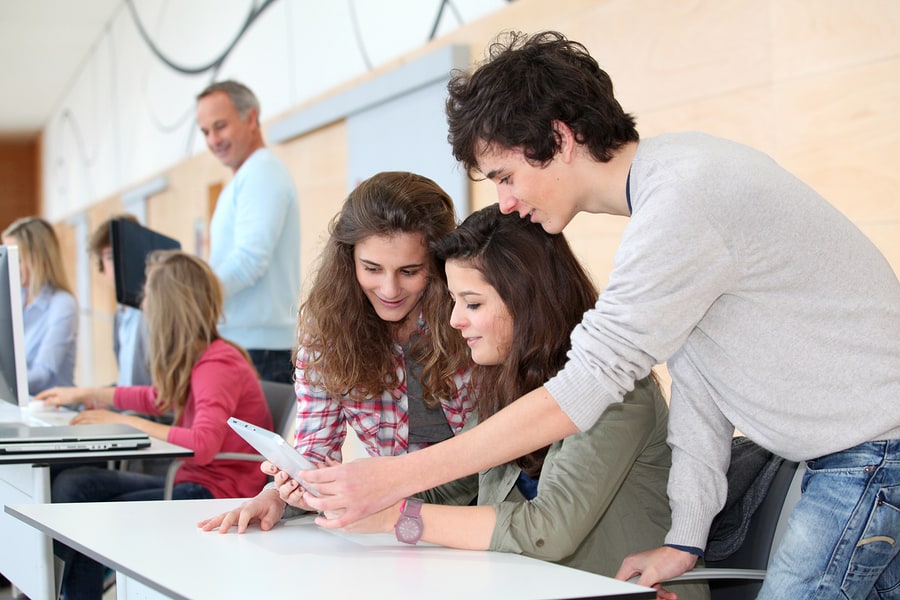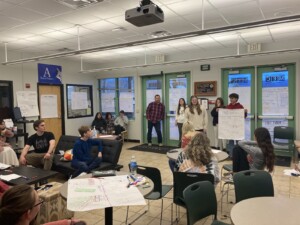What if Students Designed Their Education?

In education today, there have been a lot of discussions in regard to what skills students may need for the future. Many times we hear conversations about “21st century skills” and how to best prepare students for life and work in the 21st century. Often these 21st-century references are followed by reminders that we are well into the 21st century. We are not only thinking of the future, but these are also the skills that our students need today.
According to Alan November, keynote speaker and international leader in educational technology, there are certain skills that students need and that teachers need to promote within the classroom. Students need to be taught “how” to learn and prepare for more than knowing the content, by developing skills that are transferable to multiple areas of life and work. During a keynote presentation, November stated: “I think we should begin to move more and more toward the skill side, because if we teach you to memorize and regurgitate content and your job is wiped out by technology, you’re not well prepared to reinvent yourself if you didn’t learn how to learn.”
November’s message reinforces the importance of students developing skills such as being able to communicate, collaborate, problem-solve, think critically, to name a few. These are some of the key skills that will enable students to be adaptable to whatever type of work they ultimately find or whatever the next steps are once they leave high school. They are skills they will need whether they enroll in college, seek employment, pursue specialized training, or even take a gap year to decide. With changes in technology and in the capabilities when it comes to learning and the future of work, we can’t truly know what employers will look for five years down the road. The best we can do is to give students access to the right tools to equip themselves with not only the content that we are teaching, but infuse the curriculum with choice through independent learning and exploration of interests that students have. An important goal in schools today should be for students to drive their own learning and develop skills that are authentic and meaningful for learning but at the same time are unique to them.
Changing the Look of Schools and Learning
We’ve heard about the “gig economy” and how students need to have the capability of working in different industries and with different types of work. In a gig economy, each job or work assignment is comparable to an individual “gig” or temporary employment. The generation do-it-yourself (DIY) ties into that same thinking. We need for students to do more than simply consume content, we need for them to create and beyond just creating with the content we have given them, they need to come up with their own questions and problems to be solved. Students need to be the designers of their learning journeys.
So what can we do to help our students become part of Generation DIY?
We need to give students the space to design their own learning path and to take charge of their education. There are a lot of instructional strategies that lend themselves to this “generation do-it-yourself” such as a genius hour, project-based learning, service-learning, experiential learning, and makerspaces, among others. As educators, what can we do to ensure that all students have an equal opportunity to explore and have access to whatever it is that they might need? How can we truly know what they will need in the future to enable us to help them? We can best prepare by giving and being open to options that diverge from the traditional look of schools and learning.
Schools around the country have started to offer more courses based on emerging trends and what the “predictions” are for future-ready skills. Some courses or components of courses available in schools, including my own, are entrepreneurship, web design, sports and entertainment management, and other courses with content and opportunities to help students develop the skills necessary to design their own learning journeys. Students need more real-world opportunities to engage in that connect them with their community and develop the skills to assess needs in the community and globally, and brainstorm ways to offer services that will be beneficial for others. It happens that educators often assume that students have certain skills, for example, they know how to use and leverage technology effectively because they have grown up in a technology-infused era. However, the reality is quite different. We need to make sure that students have time to learn basic skills and then can push themselves to go beyond. Students need time to learn to adapt and be flexible and move beyond the traditional format of school and move into more learning that does not necessarily have clear-cut specifications.
Options for Generation DIY
You might wonder what options exist for students in the Generation DIY. Here are a few ways for students to explore different choices after high school that would promote some of the skills they will need as they prepare for the uncertainty of the future of work and learning.
- Schools can consider creating more opportunities for students through Career and Technical Education (CTE) programs. Through these programs, students can explore careers and work on building skills that are transferable to diverse types of work. When students have access to CTE programs, they get to look into emerging trends in the workforce, explore different careers and walk away with certifications that can increase their marketability in the workforce. For students who may be unsure of the next steps after graduation, CTE programs can offer them time to be curious by exploring possible career options, while developing their skills in high school.
- Place-based education gives students the opportunity to explore their communities, learn about the geography and immerse more in authentic learning by stepping out into the “real-world” for more meaningful ways to develop skills in math, social studies, science, language arts, and other content areas. There are six design principles in PBE, which are not required as part of the place-based education, however, when they are included, lead to more authentic and higher quality experiences. The Place Network is a collaborative of rural K-12 schools which provides a wealth of resources for learning more about PBE and becoming a PBE school.
- Service learning programs give students an opportunity to learn by exploring real-world issues, even investigating on a global scale and then taking action in their own community. Educators can implement methods such as project-based learning or inquiry-based learning to engage students more by addressing problems or challenges identified in their local environment. Involving students in service learning programs gives them the chance to build skills for the future and learn about their own interests in the process.
- The Generation DIY Campaign is aimed at giving students the chance to “chart” their own course through high school and college by exploring different careers and developing diverse skills that are transferable to multiple areas of work. The Generation DIY toolkit provides information and resources for educators and students to get started and also includes personal stories about the process and impact of Generation DIY.
- Artificial intelligence (AI) is a growing area in which students can design their own technologies to address issues they identify in the world. AI use is increasing and students can become the creators of AI that can possibly change the way students learn, by creating things like chatbots, or learn how to code and create a virtual assistant. There are many tools available for students to explore how AI is used in everyday life and design their own project based on AI. These technologies help students to build skills in problem-solving, critical thinking, collaboration, and creativity, to name a few, which are essential skills for whatever the future holds for them.
In the end, it comes down to the different choices that we make available for students in schools today. While we certainly cannot predict the jobs that will exist in 10 years, when the current kindergarten students will be entering their high school years, the best way to prepare is by having options in place and connecting school and community.
For more, see:
- Looking Back: Versatile Tools That Made a Difference
- Virtual Reality in the Classroom is Becoming the New Norm
- Brain Research, Creativity and Project-based Learning
Stay in-the-know with innovations in learning by signing up for the weekly Smart Update.





0 Comments
Leave a Comment
Your email address will not be published. All fields are required.